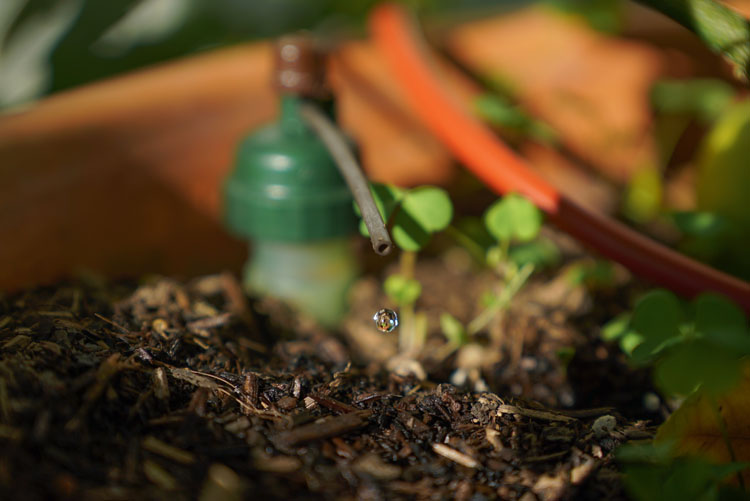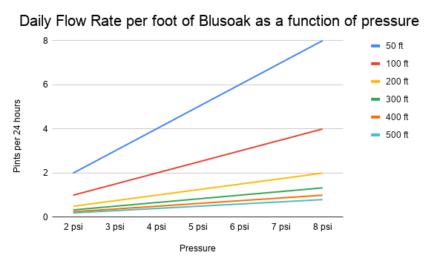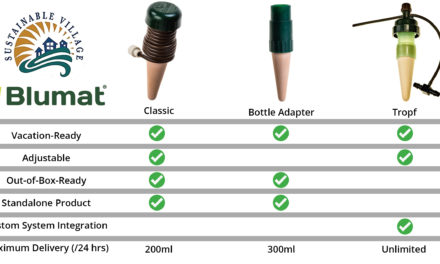There is no doubt that the rapidly expanding cannabis market is creating one of the fastest growing industries in the country. According to Forbes, North American sales are projected to top $20.2 billion by 2021 assuming a compound annual growth rate of 25%. This year alone, medical marijuana is legal in 29 states. For recreational use, it is legal in 9 States, and within Washington DC.
Meanwhile, several factors, including shifts in climate patterns, increased incidence of droughts, pressures of competing agricultural production, and federal policy (that has halted the ability for the industry to access federal water in Colorado and Washington for example), have resulted in an urgent need to meet the water needs of this growing industry, within a sound, sustainable and cost-effective framework.
Cannabis is a very thirsty plant. According to the California Department of Fish and Wildlife, one plant can drink 5 to 10 gallons of water per day. Depending on the environment and medium, these plants can consume more. In the quest to increase quality and maximize yield, regardless if cultivators aren’t experiencing drought conditions, or even water restrictions, the consideration of implementing minor changes that support water conservation in general are important. As its legal to grow cannabis in many states, there is a shared responsibility amongst cultivators to adopt and invent new methods to conserve water.
Luckily there are a growing number of innovators in water conservation within the industry, and systems and even small, simple methods are emerging that can assist cannabis growers in both large-scale grow houses or personal home cultivation.
Recycling Condensation
Maintaining a controlled environment in cannabis cultivation can reduce waste, such as avoiding water runoff, as well as such benefits as reclaiming transpired water.
In the quest to increase quality and maximize yields, greenhouse conditions now approach a near “perfect” environment. However, even in this ideal man-made condition, ironic liabilities exist. For example, greenhouses maintain high humidity levels in order replicate the cool, humid morning type of conditions that support plant photosynthesis. This practice speeds growth, but plants are “locked” into this metabolic moment; a moment that normally would occur in nature for only a relatively brief period during the earlier hours of the daylight.
As a result, the plant’s canopy loses its ability to regulate and release moisture, being affected by the pressure differential between the inside of the leaves and the outside of the air. In more specific terms, this situation results from a lack of pressure in the air – known as vapor pressure deficit (VPD). It “pulls” moisture out of the leaves, and, in turn, out of the soil and through the plant. The moisture then transpires back into the air.
This is when the opportunity to use that moisture comes into hand. Surna based in Boulder, CO offers systems that work both as dehumidifiers and fan coils with a condensate drain line that can be routed into the reservoir. These systems allow for continuous water, and with the option of an added reservoir and filtration system, this water becomes re-usable for the plantation.
Drip Irrigation
As old as agriculture itself, drip irrigation techniques generally deliver water in minute amounts over a constant period and will provide nutrients and water directly to the roots of the plant. The idea is an automated system that waters the plants more frequently but at greatly reduced amounts of water.
When properly designed, installed, and managed, drip irrigation may help achieve water conservation by reducing evaporation and deep drainage when compared to other types of irrigation; such as flood or overhead sprinklers, since water can be applied more precisely to the plant roots. In addition, drip irrigation has the added benefit that it can eliminate many diseases that are spread through water contact with the foliage.
While some new systems use sophisticated computer-based technology, recent developments have led to the ability to spare both computer and electrical inputs, through the use of innovative gravity systems, and /or pump systems that conserve both fuel and human resources.
One contributor within this novel technology is a company out of Boulder CO, Sustainable Village. They are the main Distributor of Tropf Blumats in North America. Tropf (which means drip in Austrian) Blumats use the principle of hydrostatic pressure to deliver water slowly and at the plant’s preferred rate, allowing each plant to determine its own irrigation schedule, influencing the rate of drip irrigation, according to changes in VPD, which minimizes wasted water and the need for dehumidification.
In addition to its effectiveness, the cost efficiency of the system is paramount. Reducing electricity, labor, costly interventions when plant growth is compromised, and providing maximum yield in the face of variable condition resulting in the potential for tremendous cost savings.

Rainwater Harvesting
This technology can be useful in locations free from drought with normal rains, as well as in drought prone conditions such as those experienced in California in the past five years. Capturing water when it rains and stored for later use may indeed be the most optimal resource for growers in varied conditions. Also, relying on rainy weather may be the simplest and easiest way to meet some state and federal regulations and restrictions.
According to The University of Arizona, College of Agriculture & Life Sciences, during a rain shower a one-inch rain can collect up to 600 gallons from a 1,000 square foot roof. A 4,500 square foot lot can receive 2,800 gallons. Both of these are a considerable amount of water.
Farmers in arid climates have perfected catch-and-store methods, and the most common is a system for trapping rainwater. Growers who are serious about using rainwater can use all available roof space to catch and collect, as well as use tarps on their plant beds to trap water.
The American Rainwater Catchment Systems Association has a bevy of literature designed to perfect catch-and-save systems on its website.
It’s best to start on small scale first and then adjust accordingly. While the water is free, capturing rainwater can come with a big price tag, depending on how large the grow scale is. Water catchment systems can cost up to $300,000 in some applications—but luckily require minimal maintenance.
Mulch
Simple as it seems, having any type of material that covers the soil of the plant has shown to bring tremendous benefits while growing marijuana. Mulch consists of any organic decomposing plant/organic material breaking down, such as leaves, grass clippings, compost or bark that is used over the plants soil base. Its benefits include insulating the soil, promoting microbial activity, and shades the soil.
A layer of mulch can increase the water retention of the plants. It keeps water from evaporating, as well as can provide a barrier from hot temperature between the soil, and external temperature. It retains more moisture, allowing roots to explore more freely and reach nutrients without drying out the soil. Mulch can also reduce soil erosion because it minimizes the impact of rain and water runoff.
According to a study conducted by the Horticulture and Crop Science Department California Polytechnic State University, “evaporation from the soil surface significantly affects crop water use efficiency. Surface evaporation accounts for 25-50% of total evapotranspiration.” Mulching with production byproducts, such as wheat straw, increases water retention and prevents soil evaporation. This also leads to even moisture distribution throughout the soil, which further improves water use. Mulch has been seen to decrease evaporation by 25-50%, which represents a major conservation of water.
As marijuana becomes legalized in numerous locations and states throughout the country, the pressure on precious water resources will increase, and new and cost-effective water conservation methods will be needed. As production expands, the demand for more water will also expand, as will systems and methods that sustain optimal production while minimizing water waste and utilizing recycling and capturing of water resources. Climate conditions are likely to be more erratic and harder to predict in the future. The Northwest of the country has already seen frequent reoccurrence of drought the last few years, and water consumption in marijuana businesses will demand rapid adaptation to lower requirement and conserve this dwindling resource. Facing increasing temperatures and reduced rainfall, the industry faces potential threats to production that can be avoided. Equally, even smaller individual production can consume significant amounts of water, and would also benefit from these conservation techniques.





